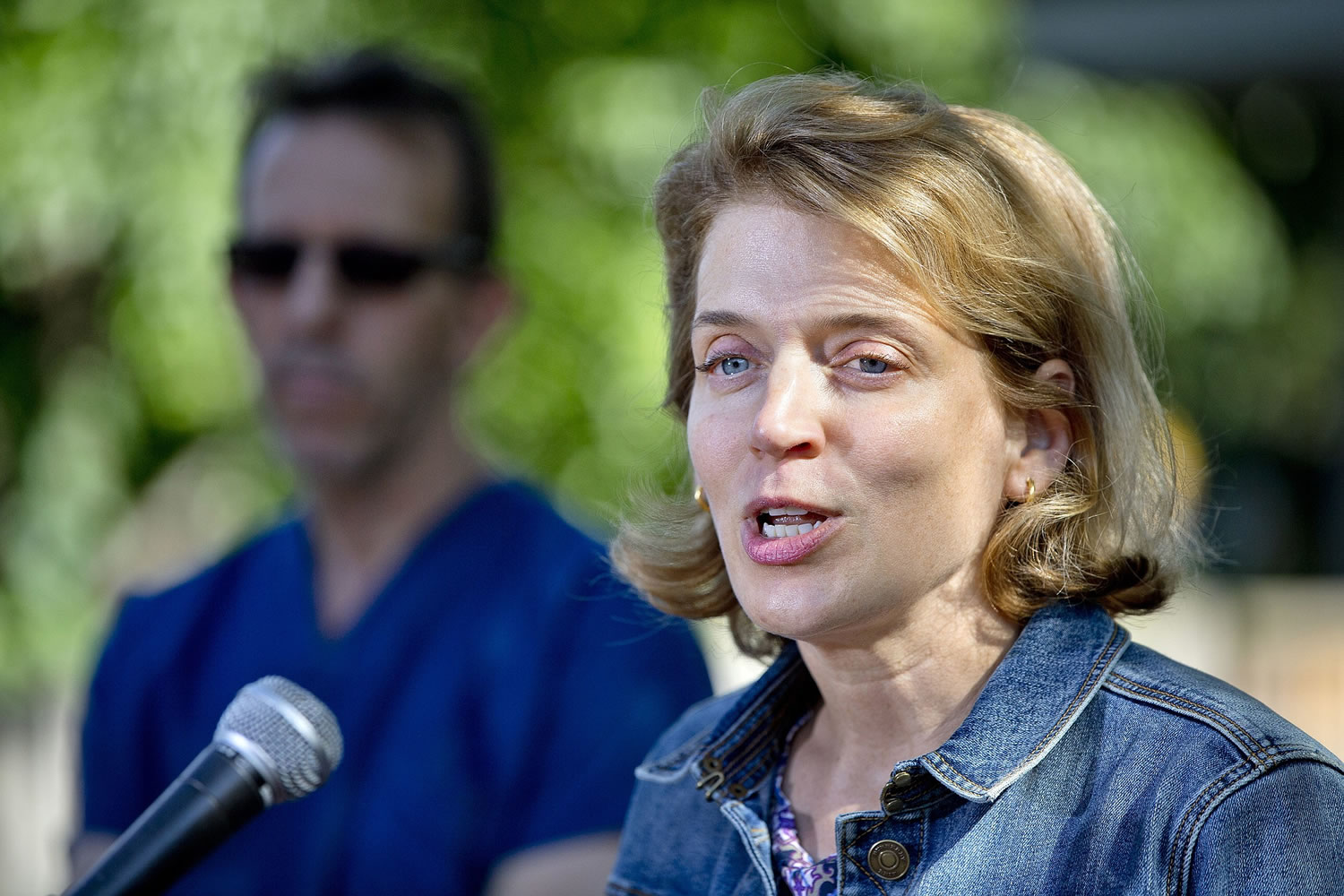WASHINGTON — Drum roll … The twin giant panda cub is a boy – and its father is Tian Tian.
The National Zoo said Friday that the cub born there a week ago Saturday was doing well.
The other panda cub, also a boy and of the same father, died Wednesday. Officials said an initial necropsy shows that the cub had inhaled some food product, which led to pneumonia.
The zoo’s female giant panda, Mei Xiang, was artificially inseminated twice this year – on April 26 and 27 – with semen collected from the zoo’s male giant panda, Tian Tian, and from a male at a research center in Wolong, China.
The Wolong panda, Hui Hui, was picked because he was a good genetic match for Mei, the zoo has said. The sample from Hui Hui was frozen and flown from China to the zoo’s cryopreservation bank.
The zoo used DNA tests to determine sex and figure out which male sired the cubs.
It has been a whirlwind nine days at the National Zoo after experts realized Mei was pregnant Aug. 19. She delivered the twins Aug. 22, and the smaller one died Wednesday afternoon after a six-hour effort by zoo keepers to save it.
Officials had used bottle and a tube at points to feed the smaller panda cub at various points.
On Friday, the zoo’s chief veterinarian Don Neiffer said that the cub could have inhaled food during one of the bottle feedings. Experts had also resorted to tube feeding, where a tube is inserted down the cub’s throat so food can be delivered to the stomach. The cub could have inhaled food at that point as well, said.
Zoo officials said they have been saddened by the death of the one cub but also watching – with hope – that the surviving cub continues to do okay.
On Friday, Neiffer said, “my feeling is that the reason this cub declined is because of complications associated with us hand rearing it, providing milk either through the nipple or the stomach tube.”
The hand-rearing and swapping of the cubs was necessary, he said.
“If we had not done anything, there was a real chance that neither cub would survive,” said Neiffer.
It could have happened to either cub, Neiffer said, as both were hand fed at different times.
“As the (smaller one) got weaker, looking at the videos we have, there is some feeling that Mei Xiang knew something was going on,” said Neiffer . “There was never any evidence that she was preferring one cub over the other.”
“We knew going into this that there was potential for the complication that occurred,” he said.
Mei is not new to motherhood.
She gave birth to daughter Bao Bao – whose father is Tian Tian – on Aug. 23, 2013. She also delivered a stillborn cub the next day.
That year, Mei had been inseminated with sperm from Tian Tian and with some shipped from a giant panda at the San Diego Zoo, Gao Gao.
Zoo experts have said it is hard to determine visually the sex of a cub because the reproductive organs are not fully developed. So veterinarians examine chromosomes.
Females have two X chromosomes, and males have an X and a Y chromosome.
Mei’s latest set of cubs has been a closely watched event as news of the birth unfolded around the world. It was only the third time that giant panda twins have been born in the United States.
On Saturday, one of the cubs was born at 5:35 p.m., weighing about three ounces. To zookeepers’ surprise – a larger twin was born at 10:07 p.m. Saturday, weighing 4.8 ounces, the zoo said.
Keepers had been switching the cubs as often as they could – giving one to Mei, while caring for the other in a special incubator. Then, at an opportune time, they would swap the animals.
This gave each cub time with the mother and allowed her to focus on them individually. Often, when twins cubs are born, the mother is generally able to care for only one, and the other dies.
Zoo officials have said that pandas who have twins often can’t care for both babies.
But it proved hard to make the switch. The smaller cub wound up spending less time with the mother and more time being cared for by the keepers.
Wednesday, after keepers retrieved it from its mother, it went into decline and died at 2:05 p.m.
Neiffer said the necropsy did not immediately show if there was any food substances still in the cubs’ lungs. There was some milk found in its trachea.
Officials said the cub’s lungs looked “angry” when they were examined during the necropsy.
Neiffer also said that the zoo did not want to raise one of the cubs completely away from its mother. The plan was always to continue swapping the cubs back and forth with their mother to maximize her bonding with them.
Officials said they were not sure exactly when the dead cub had inhaled the milk product, but the zoo staff noticed at one point that the cub’s head had regurgitated some food.
“At some point, mom would more than likely do what they do in the wild . . . she would have made a choice,” said Neiffer. “They don’t generally raise both of them.”
“Honestly, we didn’t have a choice,” he said. “What we did was the most appropriate thing, considering the health of both cubs.”



